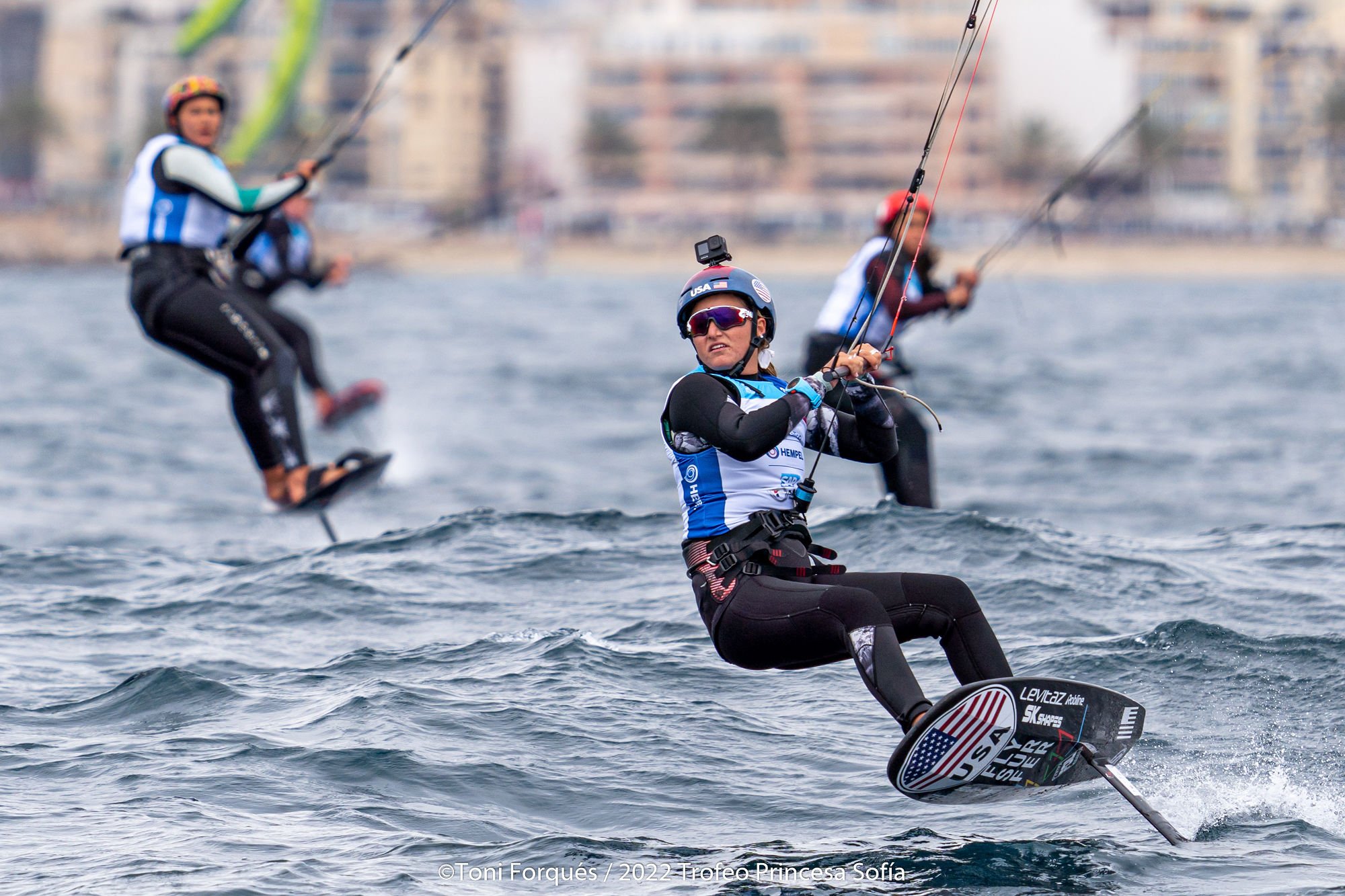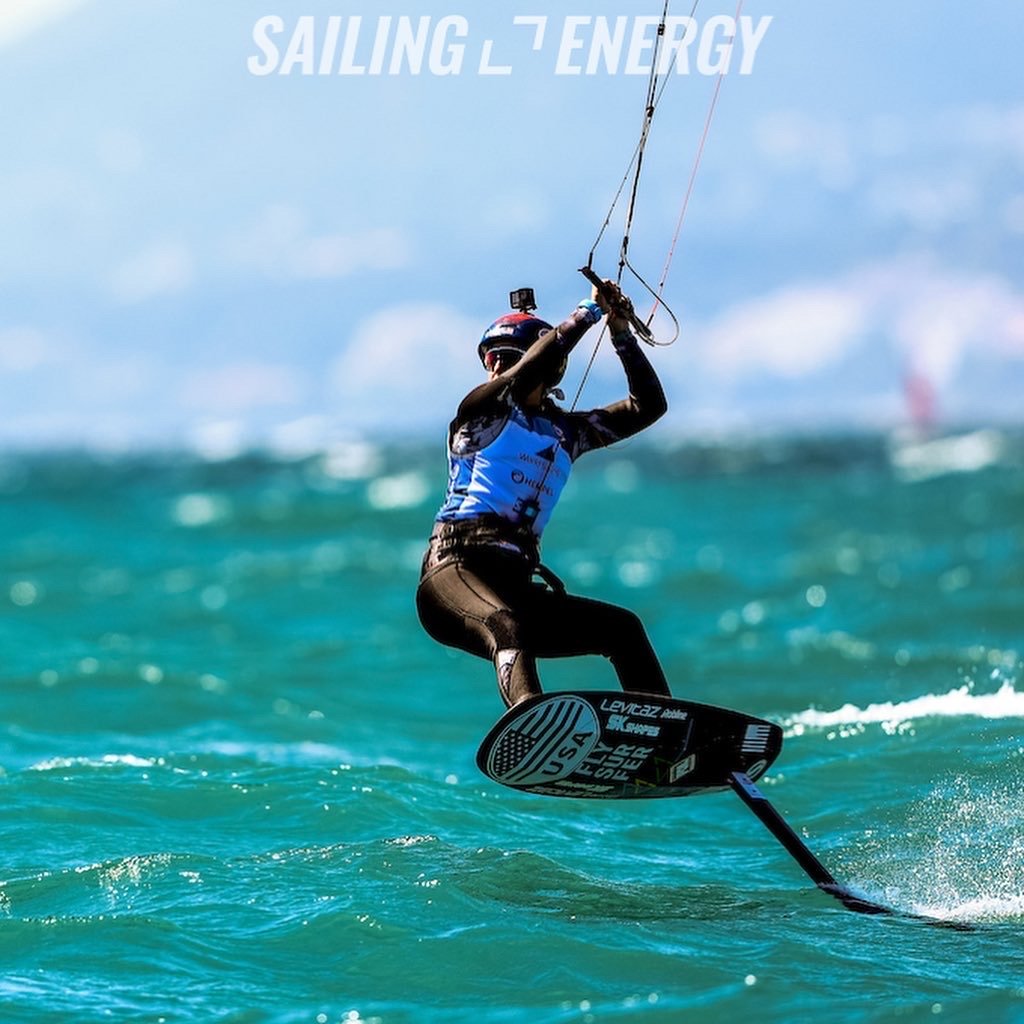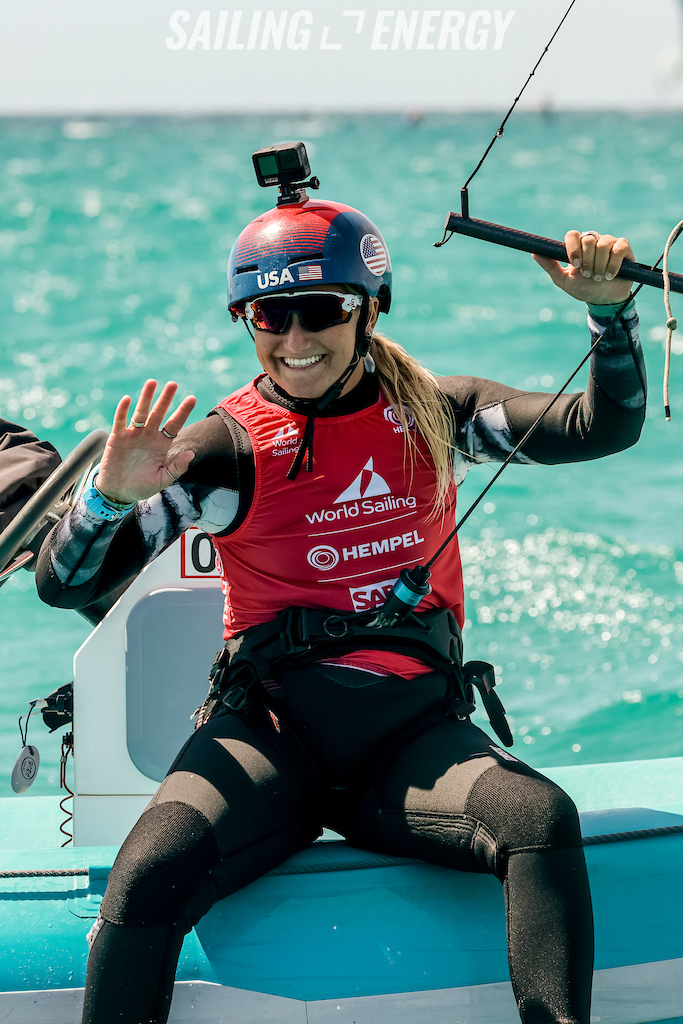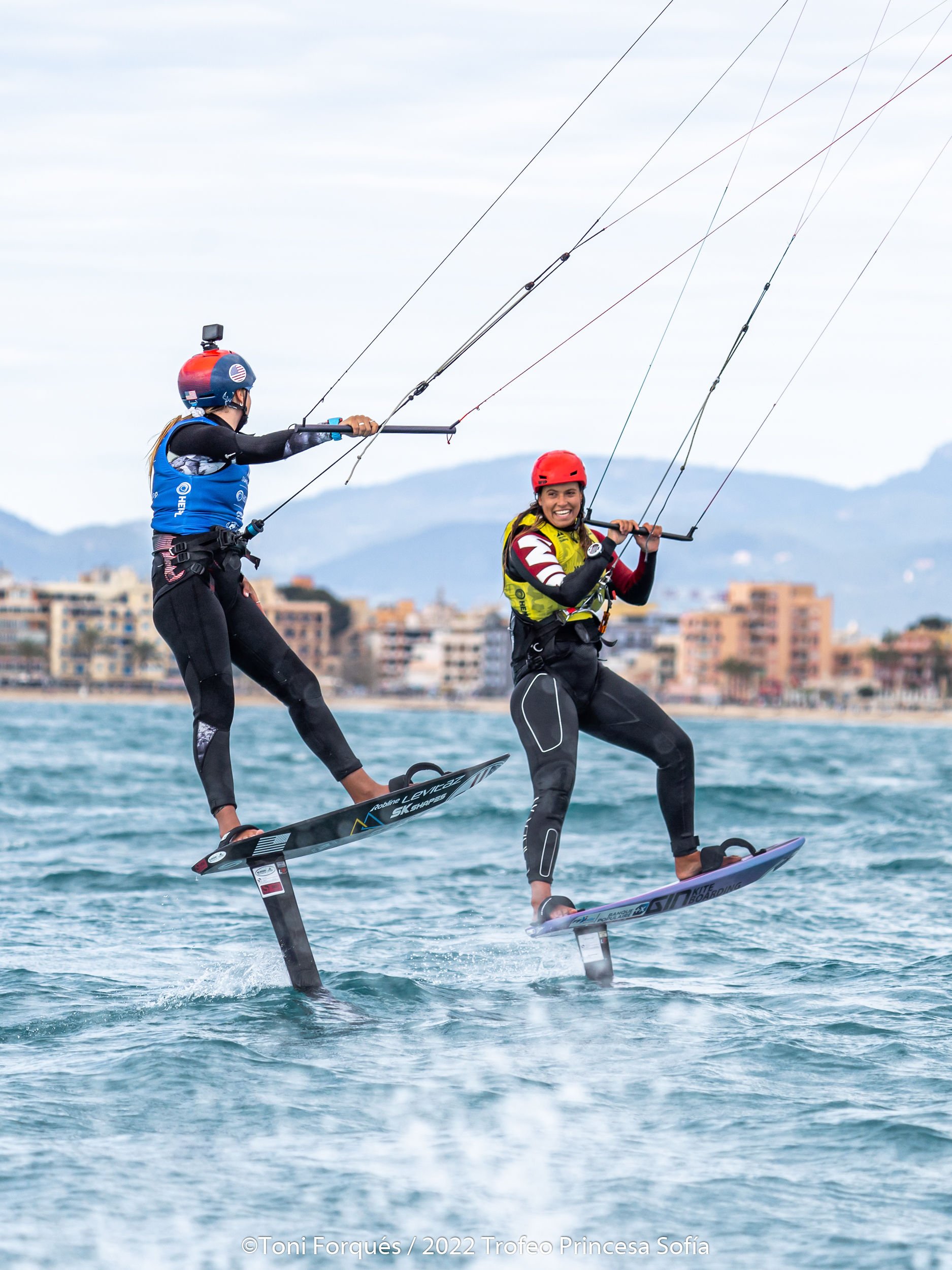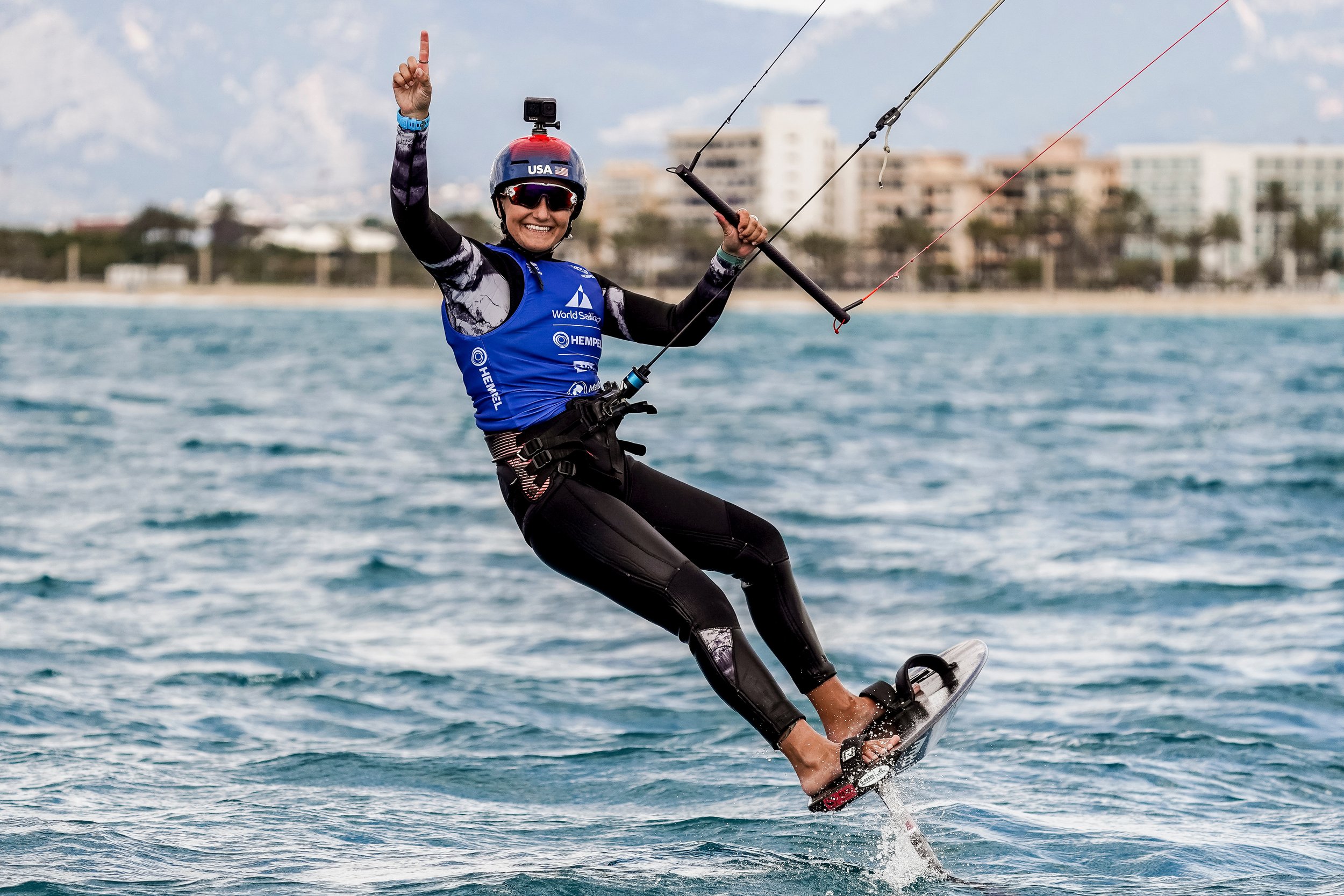The Trofeo Sofia Regatta - My First Comeback
The Trofeo Sofia is a really iconic Olympic Sailing regatta, and the 51st edition was the first time kiteboarding was included in this special event amongst all the other 2024 Olympic sailing classes. It is a very high stakes, prestigious regatta in the Olympic sailing world.
Although I spent a lot of time training this winter, I also had to be at school doing in person classes which is a very careful balance. I knew I wanted to do the Palma regatta, however I was well aware that I would not be ready to compete at peak level due to a combination of school and SailGP. And, that was okay as I was certainly not trying to peak at this regatta, but rather at the World Championships later this year. Despite this, I came into the regatta with very specific focus points in mind for what I needed to work on in my racing: my starting strategies & positioning, and identifying what kind of tactics to use based on the conditions that day.
The week before racing was far from ideal - I finished SailGP in San Francisco, flew to Hawaii for 48 hours to take my midterm exams at school, ended up spending much of those 48 hours in bed fighting a cold, flew back to San Francisco, picked up my board bags, and finally made it to Palma 3 days before racing began. I was still feeling very sick when I arrived in Palma and used those 3 days to relax and recover from a very long and intense week of school and travel. It is safe to say that I was simply not prepared to be performing at peak level once race day came around.
The first 2 days of the regatta were very interesting. It was my first time not leading a regatta since 2016. It was my first time not winning the majority of the races on a single day since 2016. It was a very interesting and different position for me to be in. It would be very wrong to say I am disappointed in my performance - in fact I feel quite the opposite. Despite the fact that I felt far from ideal on the race course (I felt very loose on the foil and just couldn’t quite lock in like I usually can), I maintained a positive attitude and continued to focus on my starts and strategies. I didn’t worry about the results or points, I just worked to improve every race and make the most of the experience.
I always knew this day was coming - the day that, to put it quite literally, I would stop winning everything. I knew I couldn’t expect myself to keep winning everything, it’s just not realistic. The fleet is developing and improving and the margins are getting smaller. If I make a mistake, the costs and relative losses are much greater. Over the past year, I have worked hard to develop a process-oriented mindset that truly prepared me, so once this day came around, I embraced the learning, embraced the change, and really made the most of the experience.
On day 3 I started to turn things around - I chose to ride my 15m kite while the rest of my fleet was on 11m kites. It was a bold choice as it was getting very windy, however it ended up being the right call. I started winning races again, pushed the start with my first UFD (in a major regatta) in several years, and found the flow again. I continued with consistent wins on day 4 and managed to qualify directly into the final in second overall behind Lauriane Nolot. This meant I would need to win 2 races in order to win the regatta, another new experience for me as in the past I always entered the final needing to win only one more race to win the regatta. I was very excited to be in this position for the final day and to practice delivering under pressure.
The final racing was extremely tight. The conditions were challenging and there were several postponements due to big wind shifts. I managed to take the win in the first race, so I only needed to win one more race to win overall. On the start of the second race, the wingtips of my kite collapsed as I accelerated on the line. This put me very far behind as I had to slow down and uncollapse the kite by back stalling it before actually starting the race. I focused on speed and managed to round the top mark in 3rd. On the downwind I made another pass and rounded in second. Lauriane stayed ahead on the upwind, and I rounded the top mark just behind her. My heart was pounding - if I could pass her then I could secure the win. She gybed out early, but I got a nice shift and decided to keep going on starboard, it was going to be close. I finally gybe onto port, knowing I would have to pull off another gybe on the inside to get ahead of Lauriane. Out of the corner of my eye, I saw her lift her kite to go for the gybe, and then a big splash as she crashed. I reached the layline for the bottom mark and completed my final gybe, and then crossed the finish line in first.
There isn’t a single win that felt as satisfying as that one. It was a very hard fought comeback, and when I rode up to the coach boat for a quick debrief with my coach, Charlie McKee, even he said “I’m not entirely sure how you did that”. As I said on social media later on, the theme of the week was definitely comeback, and that final race epitomized how the battle isn’t over until it’s actually over.
A massive thank you to my sponsors, teammates, coaches, friends, family, and community for the continued support no matter what. I couldn’t do it without you.
